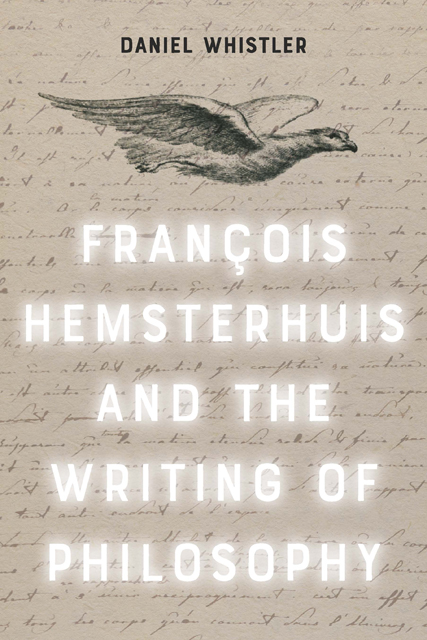Chapter Five - The Past and the Present
Published online by Cambridge University Press: 03 June 2023
Summary
I would give so very much for a conversation with Hemsterhuis: he is your Plato but his century does not understand him.
Jean de Müller to Goethe (quoted in Brachin 1952: 52)For Hemsterhuis, philosophy is dead.
Poritzky (1926: 103)§19 The Optimum
The present chapter describes some of the ways in which Hemsterhuis attempts to make time perceptible in his writing, and it proceeds by setting up a contrast between the function of the present in the early and the late Hemsterhuis’ practices of philosophical communication. Before 1775, Hemsterhuis’ writing is structured according to a model of optimal form – a model which privileges intuitive over discursive reasoning, which is hostile to temporal and historical succession, and which calls, instead, for simultaneity in thinking, i.e., the coexistence of as many ideas as possible. It is a model of the all-at-once. After 1775, Hemsterhuis begins to write in a way that is open to history and succession as well as optimal form. The dialogues stage a conflict between the present and the past – not just a quarrel between the ancient perihelion and the modern perihelion, but between historicity and presentism, between the virtual and the actual.
In the last of his published dialogues, Alexis, Hemsterhuis returns to a principle that had served as ‘a leitmotif across his work … a genuine guiding thread’ (Boulan 1924: 66) – the ideal of the optimum. He writes,
The ideas of many existent or possible things can be reconciled such that they are almost coexistent in the mind for some moments, [and] it is certain that the intellect will perceive most of the relations between these ideas, which let themselves be grasped with the utmost facility – that is, relations which constitute for us the richest, truest and simplest beauty. … Hence, my dear Alexis, it is the faculty of bringing together the most and the best ideas which gives birth to the beautiful and the sublime, and which, so to speak, shows great truths by intuition to those souls which thereby appear to us to have the most intimate relationships with the Divinity. (EE 2.141; OP 628)
Hemsterhuis describes an epistemic ideal that consists in making coexist as many ideas as possible so as to intuit their rapports.
- Type
- Chapter
- Information
- Francois Hemsterhuis and the Writing of Philosophy , pp. 203 - 244Publisher: Edinburgh University PressPrint publication year: 2022



